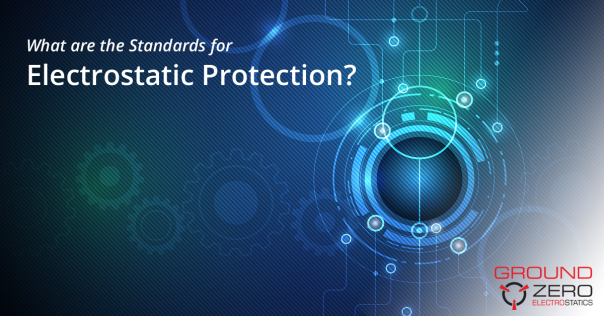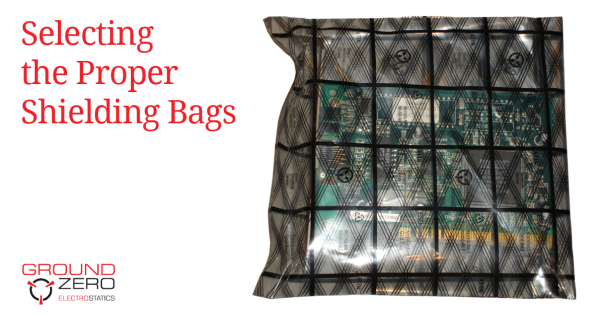5 Reasons Why Static Programs Fail

On May 6, 1937, the German passenger airship LZ 129 Hindenburg caught fire and was destroyed, killing 36 people in front of national news cameras and effectively ending the Zeppelin flying experiment.
The Hindenburg was larger than 4 Goodyear blimps combined, or about as long as 2/3 the height of the Empire State Building.
It was rainy that day, and the mooring ropes dragged along the ground as the airship came down to dock in Manchester Township. The prevailing theory is that the wet dragging ropes generated a static charge that traveled up them onto the ship.
There the charge ignited the Hydrogen fuel and… boom. Once considered the future of air travel, flying airships would not be utilized, either commercially or for military use until the end of World War II.
All caused by a single spark.
Much like the Hindenburg disaster, your company’s program to control electrostatic discharge (ESD) can be toppled with a few small errors that blossom into larger problems if they aren’t properly accounted and planned for.
So today, let’s look at the 5 common reasons why your static control programs could fail.
Sure! We have ESD Protocols, Right?
Most companies that deal with sensitive electronics and circuit boards also require that their vendors, third party suppliers, and subcontractors have an ESD program in place. Often even before signing a contract, an engineer is sent in to audit the ESD practices. And from time to time they will do spot-checks to verify that those practices are still in place.
Some companies, in an effort to hold on to their contract or cut expenses, will simply throw together a minimum program that can be audited. It’s done as inexpensively as possible and often doesn’t have any true protocols – training, preventative maintenance, and enforcement fall by the wayside.
You’d never do that, right? Well, except…
This is Gonna Cost How Much?
Top management are always looking at ways to work more economically. Unfortunately, if they are not properly briefed on the importance of proper ESD protection protocols, they may see many aspects of the ESD program as expensive and possibly unnecessary.
This isn’t their fault, they just need to be better educated. Which may be your job. The fact is, the expense for good, well-developed ESD protection protocols is dwarfed by the cost to replace or repair non-functioning components, not to mention the company’s reputation.
Excellent ESD companies are led from the top down, with company leadership not only showing financial support for ESD preventative programs, but also making time to attend training themselves, praise persons and departments with the best implementation, and allocate time and funds for ongoing training and improvement of existing programs.
Otherwise, you might end up in a pinch…
Here’s a Band-Aid for that Severed Limb!
You might have heard the old saw, ‘if there’s no time to do it right the first time, how are you going to find time to fix it later?’
Unfortunately, many companies appear to follow a different maxim – there’ll always be time to do it over.
Like our last reason, the problem is often financial. Momentary solutions that can be quickly applied to fix individual problems becomes the norm, despite the fact that the long term expense is much higher.
The best, most cost-effective solutions are applied right the first time and “solve” lots of problems by the fact that they prevent so many of them for happening. Then you don’t get into a situation where you’re spending a lot more to fix what could have been an easily avoided minor problem, but is now mission critical.
But that’s not going to help unless…
Training? We Don’t Need no Stinking Training!
Proper ESD prevention is a team effort, but many companies underestimate the size of the team involved. As mentioned before, upper level management should take an interest in training, and in fact, every employee should be given at least a rudimentary class or video in how to follow the company’s practices.
It’s not enough to train the engineers of you haven’t informed the janitorial staff that cleans their sensitive work areas after they leave for the day how to properly do so.
Secretaries, interns, sales people – everyone who has the potential to walk into or affect an Electrostatic Protection Area (EPA) needs to know how to properly behave to minimize risk.
And finally…
We Only Use the Best – the Best We Can Afford, That Is.
Yes, it keeps coming back to price. But price should not be the only factor in deciding who to buy your ESD supplies from. Not all companies are created equally. Not all ESD products are held to the highest standard.
You want to find a vendor that can supply your ESD needs who can guarantee all of their products are properly tested, meet or exceed industry standards, and have the certification to prove it.
Always be sure to properly vet your chosen vendor, making sure they meet these requirements and be willing to ask for clients you can speak to and recommendations you can verify. If they’re reputable, they’ll be more than willing to have you check them out with their existing happy clients.
ESD prevention is no casual task. Your company may not have the risk of ending 36 lives, but putting best practices into place can certainly save jobs, computers and your clients.
We’d love to be the experts you can count on for your full service, seamless ESD solutions. For more information or advice on your specific ESD prevention needs – or any other ESD questions, please contact us today.








